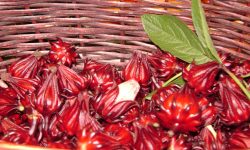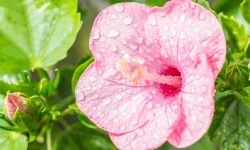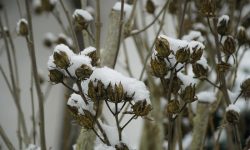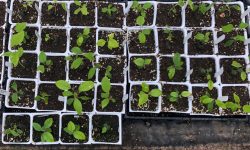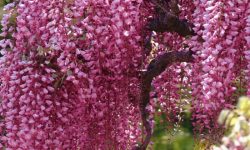Heuchera, commonly known as coral bells, offers gardeners vibrant foliage and delicate flowers throughout the year. Its leaves come in a wide range of colors, from deep burgundy to bright lime green, creating eye-catching accents in gardens, borders, and containers. Gardeners appreciate heuchera for its adaptability, thriving in full sun or partial shade while requiring minimal maintenance, making it an ideal choice for both beginner and experienced plant enthusiasts.
Growing heuchera successfully requires attention to soil quality, proper drainage, and consistent watering. Gardeners who follow the right care routines can enjoy vivid leaf colors, abundant flower spikes, and plants that resist common pests and diseases. This guide provides step-by-step instructions, practical tips, and advice on avoiding mistakes, empowering gardeners to cultivate healthy, thriving heuchera that enhances any garden or landscape design.
Choosing the Right Location for Heuchera
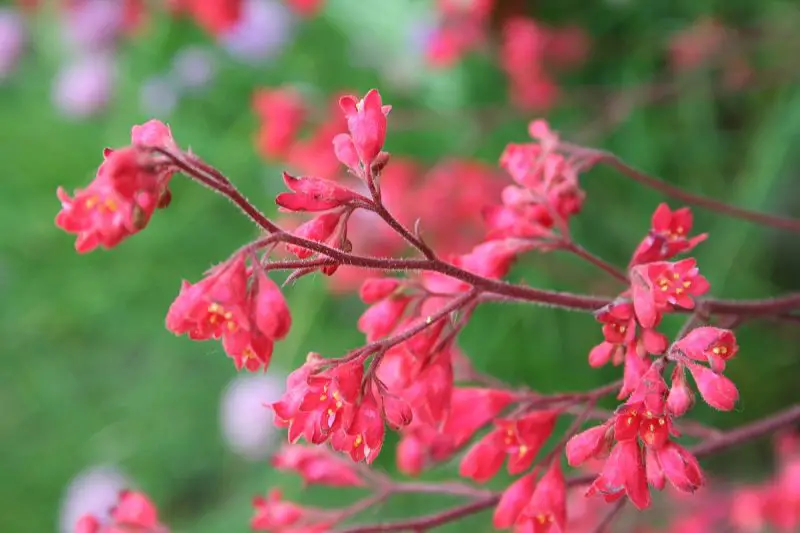
Choosing the right location plays a crucial role in the successful growth of heuchera. These plants thrive in areas that receive morning sun and afternoon shade, although some varieties tolerate full sun or deeper shade. Gardeners should observe their garden’s sunlight patterns before planting. Placing heuchera in the right light helps the leaves maintain their vibrant colors and supports healthy, steady growth throughout the year.
Soil conditions also influence where to plant heuchera. The plant prefers well-draining soil rich in organic matter. Heavy clay or waterlogged areas can stress the roots, leading to poor growth or disease. Incorporating compost or aged mulch into the soil improves texture and fertility, giving heuchera a solid foundation. Choosing a slightly elevated spot can enhance drainage, especially in regions with frequent rainfall.
Another consideration involves spacing and air circulation. Plant heuchera with enough room for airflow between neighboring plants to reduce the risk of fungal infections. Avoid overcrowding, as dense planting can trap moisture and promote leaf spot or powdery mildew. Proper location selection ensures the plant receives adequate sunlight, nutrients, and ventilation, setting the stage for strong, colorful foliage and abundant flowers that last through multiple seasons.
Preparing the Soil for Heuchera
Preparing the soil properly is essential to ensure heuchera grows strong and vibrant. The plant prefers well-draining soil rich in organic matter. Before planting, loosen the soil to a depth of at least 12 inches to improve root penetration and aeration. Adding compost or aged manure enriches the soil with nutrients, supporting healthy foliage and abundant flowering. Proper soil preparation creates an ideal environment for roots to establish quickly and reduces the risk of disease or stress. Taking time to remove rocks, roots, and debris also helps create a smoother soil structure that encourages even growth.
Soil pH also affects heuchera growth. These plants prefer slightly acidic to neutral soil, typically with a pH between 6.0 and 7.0. Gardeners can test their soil using a simple kit and, if needed, amend it using garden sulfur to lower pH or lime to raise pH. Ensuring the correct pH enhances nutrient availability and promotes strong, vibrant leaves. Avoid heavy chemical amendments that might burn young roots or create nutrient imbalances. Regularly monitoring soil health supports long-term plant vitality and reduces the likelihood of deficiencies.
In addition to fertility and pH, gardeners should improve soil texture and drainage. Mixing in perlite, sand, or fine bark helps prevent waterlogging while maintaining moisture retention. Raised beds or slightly elevated planting areas can further enhance drainage, particularly in regions with heavy rainfall. Incorporating a layer of organic mulch after planting helps regulate temperature, retain moisture, and suppress weeds. Taking the time to prepare soil properly sets the foundation for heuchera’s long-term health, colorful foliage, and continuous blooms throughout the growing season.
Planting Heuchera Correctly
Planting heuchera correctly ensures healthy growth and long-lasting foliage. Start by digging a hole slightly larger than the plant’s root ball, allowing roots to spread easily. Gently remove the plant from its container and loosen the root mass to encourage outward growth. Position the crown at soil level, ensuring it sits neither too deep nor too shallow, which can affect water absorption and overall vigor.
When planting, backfill the hole with enriched soil, gently firming it around the roots to eliminate air pockets. Water the plant thoroughly after planting to help settle the soil and reduce transplant shock. Mulching around the base with organic material such as bark or compost conserves moisture, regulates soil temperature, and prevents weed growth. Proper spacing between plants allows airflow, reduces disease risk, and ensures each heuchera receives adequate light for optimal leaf coloration.
Gardeners should also consider companion planting to support heuchera growth. Planting alongside other shade-tolerant perennials, such as hostas or ferns, can create attractive contrast and provide mutual protection against extreme sunlight or soil erosion. Monitoring the plant over the first few weeks for signs of stress, such as wilting or leaf discoloration, allows early intervention. By following these steps, gardeners provide a strong start for heuchera, ensuring vibrant foliage, resilient roots, and a thriving garden display for seasons to come.
Watering and Moisture Management for Heuchera
Consistent Watering Practices
Maintaining consistent soil moisture is crucial for healthy heuchera growth. The plant prefers evenly moist soil without waterlogging, which can cause root rot or fungal infections. Gardeners should water deeply but infrequently, allowing the soil to dry slightly between sessions to encourage roots to grow deeper and stronger. Using a soaker hose or drip irrigation helps deliver water directly to the root zone, minimizing leaf wetness and reducing the risk of fungal diseases that can affect foliage and overall plant health.
Regular monitoring of soil moisture is essential, particularly during hot, dry periods or when plants are newly established. Check the top few inches of soil; if it feels dry, water thoroughly but avoid creating puddles around the crown. Mulching around the base not only retains moisture and regulates soil temperature but also prevents soil compaction and reduces weed competition. Combining consistent watering, careful monitoring, and proper mulching encourages strong root development, vibrant leaves, and healthy flower production, ensuring that heuchera thrives and maintains its decorative appeal throughout the growing season.
Adjusting Watering for Seasonal Changes
Heuchera’s water needs vary with the seasons and weather conditions. During spring and summer, active growth and higher temperatures increase the plant’s water demand. Gardeners should monitor soil moisture closely and provide additional water during dry spells to prevent stress and leaf wilting. Conversely, in fall and winter, growth slows, and overwatering can easily lead to root rot or fungal infections. Adjusting the watering schedule according to seasonal changes ensures the plant maintains healthy roots and vibrant foliage throughout the year.
Soil type also plays a significant role in irrigation needs. Sandy soils drain quickly and may require more frequent watering, while clay soils retain moisture longer, reducing the need for constant irrigation. Observing the plant’s condition, including leaf color, turgidity, and overall growth, helps determine whether watering amounts should be increased or decreased. Combining seasonal adjustments with proper mulching and soil management promotes steady moisture retention, supports strong root development, and keeps heuchera lush, resilient, and visually appealing in any season.
Fertilizing Heuchera for Optimal Growth
Fertilizing heuchera properly ensures vibrant foliage and robust growth. The plant thrives in nutrient-rich soil, and providing balanced nutrients supports both leaf development and flower production. Before applying fertilizer, gardeners should test the soil to determine nutrient levels and avoid over-fertilization, which can burn roots or encourage excessive leafy growth at the expense of flowers. Using a slow-release granular fertilizer or well-aged compost in early spring supplies essential nutrients gradually, promoting steady growth throughout the season.
During the growing season, light applications of liquid fertilizers every 4–6 weeks can provide additional nourishment. Choose a balanced formula with equal ratios of nitrogen, phosphorus, and potassium to support foliage health, root strength, and flower formation. Avoid high-nitrogen fertilizers, which may produce excessive leaf growth while reducing bloom quality. Incorporating organic amendments such as composted manure or leaf mold enhances soil structure and nutrient availability, ensuring heuchera remains healthy and resilient against environmental stresses.
Gardeners should also adjust fertilization based on the plant’s condition and seasonal needs. Reduce or withhold fertilizer in late fall and winter when growth slows to prevent root stress. Observing foliage color and vigor helps determine whether additional nutrients are necessary. By providing consistent and balanced fertilization, gardeners can maintain lush, colorful heuchera leaves, encourage continuous flowering, and support strong root systems, resulting in a thriving, visually striking garden display season after season.
Common Pests and Diseases in Heuchera
Identifying Common Pests
Heuchera plants, though relatively hardy, can still attract pests such as vine weevils, aphids, and spider mites. Early identification is crucial to prevent significant damage. Gardeners should inspect leaves, stems, and the soil around the base for unusual signs, including chewed edges, distorted foliage, or tiny crawling insects. Checking both the upper and lower leaf surfaces is important, as many pests hide beneath leaves. Detecting pests early allows for targeted interventions that protect the plant without using harsh chemicals, reducing the risk of widespread infestation and preserving leaf color and plant vigor.
Preventive measures are equally important. Introducing beneficial insects like ladybugs or predatory mites can naturally control pest populations while maintaining the garden’s ecological balance. Maintaining clean garden conditions, removing fallen debris, and avoiding overcrowding also reduces pest establishment. Using mulch carefully prevents vine weevils from accessing roots while allowing proper soil aeration. Regular monitoring combined with quick, appropriate responses ensures heuchera plants remain healthy, vibrant, and resilient, allowing them to thrive throughout the growing season without significant pest-related setbacks.
Managing Common Diseases
Heuchera is susceptible to several fungal diseases, including powdery mildew, rust, and leaf spot, especially in humid or poorly ventilated conditions. Symptoms often appear as discolored patches, white powdery coating on leaves, or premature leaf drop. Early detection is crucial to prevent the disease from spreading to other plants. Gardeners should inspect leaves regularly, particularly during wet seasons, and remove any infected foliage promptly to reduce inoculum and protect healthy growth.
Preventive strategies play a significant role in disease management. Proper spacing between plants improves air circulation, while mulching helps prevent soil-borne pathogens from splashing onto foliage. Avoiding overhead watering and ensuring well-draining soil reduces excess moisture, which fungi thrive on. Organic solutions such as neem oil or potassium bicarbonate can provide additional protection without harming beneficial insects. Combining regular inspection, proper cultural practices, and timely interventions ensures heuchera stays disease-free, maintains vibrant foliage, and develops strong, resilient growth throughout the season.
Seasonal Care for Heuchera
Spring Care for Heuchera
Spring signals the start of active growth for heuchera. Gardeners should remove winter debris, dead leaves, and old mulch to prevent fungal infections and encourage airflow around the crown. Applying a balanced, slow-release fertilizer provides essential nutrients for new shoots and leaf development. Light pruning of damaged or weak foliage not only promotes healthy regrowth but also maintains a tidy garden appearance. Dividing crowded clumps during early spring can rejuvenate older plants and improve air circulation, reducing the risk of disease.
Consistent watering during spring is crucial, especially during dry spells. Mulching around the base helps retain soil moisture, suppress weeds, and moderate soil temperature fluctuations. Inspecting for early pest activity, such as aphids or spider mites, allows timely intervention and reduces stress on plants. Monitoring soil conditions, adjusting watering, and keeping the garden area clean ensures heuchera establishes a strong foundation for healthy growth. Proper spring care sets the stage for vibrant, resilient plants ready for summer challenges.
Summer Care for Heuchera
Summer heat can stress heuchera, particularly when plants grow in full sun. Providing partial shade during the hottest hours of the day helps prevent leaf scorch and maintain vibrant foliage color. Deep, infrequent watering encourages strong root development, while mulch around the base reduces soil evaporation and keeps roots cool. Gardeners should monitor plants for pests and diseases, including spider mites, aphids, and powdery mildew, to apply timely treatments. Proper spacing between plants improves air circulation and reduces the risk of fungal infections, keeping foliage healthy throughout the season.
Deadheading spent flowers redirects energy to leaf growth and helps the plant maintain an attractive appearance. Light applications of a balanced or organic fertilizer restore nutrients lost due to heat stress and vigorous summer growth. Removing yellowed or damaged leaves prevents disease buildup and ensures the plant focuses on producing healthy new shoots. Adjusting care routines to summer conditions, including watering, shading, and fertilization, allows heuchera to thrive despite high temperatures and limited rainfall. Vigilant summer care promotes long-lasting beauty, strong growth, and resilient foliage for the remainder of the growing season.
Fall Care for Heuchera
Fall prepares heuchera for winter dormancy, making careful care essential. Gardeners should reduce fertilizer applications to slow growth, preventing tender new shoots that frost could damage. Removing damaged, diseased, or yellowing foliage helps reduce overwintering pests and pathogens. Watering should continue moderately to keep roots hydrated, especially before the soil freezes, but avoid overwatering that could lead to root rot. Dividing older or overcrowded clumps in early fall improves airflow and promotes healthier growth in spring.
Applying a thick layer of organic mulch, such as shredded leaves or straw, insulates the roots from temperature fluctuations and maintains soil moisture. Cleaning up garden beds and removing debris prevents fungal and insect infestations over the winter. Gardeners should also monitor for signs of stress caused by early frost or fluctuating temperatures, removing affected leaves as needed. Proper fall care ensures heuchera enters dormancy in optimal condition, preserving energy reserves for spring growth. Well-prepared plants emerge vibrant, healthy, and ready to flourish in the upcoming growing season.
Winter Care for Heuchera
During winter, heuchera enters dormancy and requires minimal but careful attention. Protecting the crown and roots with a thick mulch layer, such as shredded leaves or straw, prevents damage from freezing and thawing cycles. Avoid overwatering, as dormant roots only need enough moisture to prevent desiccation. Gardeners should also monitor for winter damage, including frost cracks, discolored leaves, or signs of rot, and remove any affected foliage to reduce the risk of disease.
Maintaining a clean area around the plants helps prevent pests from overwintering in debris or dead leaves. If plants are exposed to harsh winds or fluctuating temperatures, consider additional protection such as burlap screens or temporary coverings. Winter care focuses on preserving energy reserves rather than stimulating growth, ensuring plants emerge healthy and resilient in spring. By minimizing stress during cold months, gardeners can help heuchera survive winter successfully and prepare for a vigorous start in the next growing season, promoting vibrant foliage and strong, long-lasting blooms.
Common Mistakes to Avoid When Growing Heuchera
Overwatering or Poor Drainage
One of the most frequent mistakes gardeners make with heuchera is overwatering or planting in poorly draining soil. Heuchera prefers evenly moist soil but is highly susceptible to root rot if water accumulates around the roots. Consistent overwatering, especially in clay-heavy soils, can lead to soggy conditions that damage roots and stunt growth. Gardeners should monitor soil moisture carefully, watering deeply only when the top layer feels slightly dry.
Using raised beds or incorporating organic matter into the soil can improve drainage and prevent waterlogging. Mulching around the base helps retain appropriate moisture while keeping roots cool. Proper watering practices, combined with well-draining soil, ensure strong root development and healthy foliage. Avoiding water stress allows heuchera to maintain vibrant leaves and long-lasting blooms throughout the growing season. Vigilance in watering reduces the risk of fungal infections and promotes a more resilient plant.
Insufficient Light or Improper Placement
Another common mistake is placing heuchera in locations that receive too little light or too much harsh sunlight. While heuchera tolerates partial shade, insufficient light can result in weak stems, leggy growth, and dull foliage color. Conversely, full sun exposure, particularly in hot climates, can scorch leaves and reduce plant longevity. Choosing the right location balances light needs, ensuring vibrant, healthy growth.
Gardeners should observe how light shifts throughout the day, placing heuchera where it receives morning sun and afternoon shade if conditions are intense. Additionally, avoid overcrowding plants, as limited airflow increases susceptibility to fungal diseases. Proper placement helps maintain foliage color, reduces stress, and encourages robust flowering. By considering light requirements and positioning carefully, gardeners can prevent common growth problems and maximize the aesthetic appeal and health of their heuchera.
Neglecting Soil Fertility and Nutrient Needs
Many gardeners underestimate the importance of maintaining proper soil fertility for heuchera. While the plant is relatively low-maintenance, nutrient deficiencies can lead to pale foliage, slow growth, and reduced flower production. Relying solely on the initial soil without periodic fertilization may limit the plant’s potential. Applying a balanced, slow-release fertilizer in spring and lightly feeding throughout the growing season can provide essential nutrients.
Organic amendments such as compost or well-rotted manure improve soil structure and gradually release nutrients, supporting root development and leaf vibrancy. Avoid over-fertilization, which can burn roots or cause excessive leaf growth at the expense of flowers. Monitoring plant appearance helps determine when additional nutrients are necessary. By maintaining soil fertility, gardeners ensure healthy, lush foliage and prolonged blooming, allowing heuchera to thrive in a variety of garden settings.
Ignoring Pest and Disease Management
Heuchera is generally hardy but can still fall victim to pests like vine weevils, aphids, and spider mites, as well as diseases such as powdery mildew or rust. Ignoring these threats often results in damaged leaves, stunted growth, and lower overall plant vigor. Regular inspections of leaves, stems, and soil around the plant allow gardeners to identify problems early and apply targeted treatments.
Preventive measures also play a key role. Introducing beneficial insects, maintaining good air circulation, and removing debris reduces the likelihood of infestations. Using gentle insecticidal soaps or neem oil when needed controls pest populations without harming the plant. Prompt attention to pests and diseases helps heuchera maintain vibrant foliage and long-lasting blooms while minimizing stress and supporting overall plant health.
FAQ About How to Grow Heuchera
What type of soil is best for growing heuchera?
Heuchera grows best in well-draining, fertile soil with a slightly acidic to neutral pH. Adding compost or organic matter improves root growth, retains moisture, and encourages healthy foliage and blooms. Avoid heavy clay or compacted soil, which can cause root rot and stunt plant development.
How often should I water heuchera plants?
Water heuchera deeply but allow the top layer of soil to dry slightly between sessions. Avoid overwatering, which can damage roots, and use mulch to conserve moisture. Proper watering ensures strong roots, vibrant leaves, and long-lasting blooms while preventing drought stress and fungal problems.
What are the most common pests for heuchera?
Vine weevils, aphids, and spider mites frequently attack heuchera. Inspect plants regularly for chewed leaves, distorted foliage, or tiny insects. Introducing beneficial insects like ladybugs and keeping the garden clean helps reduce infestations naturally, protecting the plants from damage.
How should I care for heuchera in winter?
Apply a thick mulch layer to protect roots from freezing. Avoid overwatering dormant plants to prevent rot. Remove garden debris and, in windy areas, consider protective coverings. Proper winter care preserves energy for spring growth and helps plants emerge strong and healthy.
Can heuchera grow in partial shade?
Yes, heuchera tolerates partial or full shade in hot climates. Morning sun enhances leaf color, but intense sunlight may scorch foliage. Balanced light prevents leggy growth and maintains vibrant leaves, supporting healthy plants with strong blooms throughout the growing season.
Conclusion
Caring for Heuchera requires attention to soil, light, water, and seasonal conditions. By providing well-draining soil, consistent moisture, and partial to full sunlight, gardeners can promote vibrant foliage and healthy blooms. Regular pruning, monitoring for pests, and adjusting care through seasonal changes ensure plants thrive year-round. Winter protection and proper fertilization further strengthen resilience and longevity. With thoughtful, consistent care, Heuchera not only enhances garden aesthetics but also provides long-lasting beauty and structure. Following these expert tips allows gardeners to enjoy flourishing, colorful, and robust Heuchera plants every season.


